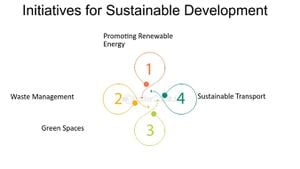In a groundbreaking study, researchers have developed a new quinary electrolyte for aqueous zinc-metal batteries (AZMBs) that enables stable operations across an unprecedented temperature range, from -50 to +100 °C. The electrolyte, termed ZGBCP, demonstrates excellent conductivity, robust interfaces, and longevity, making it a promising advance for the next generation of energy storage systems.
Traditionally, AZMBs have faced significant challenges, particularly at extreme temperatures. Most conventional electrolytes, primarily based on zinc sulfate, suffer from the solvation effect of water molecules which not only aids in the dissolution of zinc ions but also leads to undesirable side effects like hydrogen evolution reaction (HER) and the formation of dendrites—small, needle-like structures that can cause short circuits. This study marks a significant leap forward by addressing these challenges with ZGBCP, which incorporates boron, glycerol, boric acid, chitosan, and polyacrylamide into its unique structure. The implementation of these components allows a co-reconstruction of both cationic and anionic solvation structures, significantly enhancing performance.
The significance of ZGBCP cannot be overstated. The electrolyte's design aims not just for improved performance, but also for environmental safety. AZMBs are attractive for being environmentally friendly, safer than lithium-based batteries, and economically feasible. Yet, enabling them to operate efficiently and reliably under varied conditions was a complex challenge. As explained by the researchers, "The formulation of ZGBCP demonstrates the integration of liquid-like conductivity with solid-like stability, promoting maximum efficiency even in the most extreme environments. This combined effect is pivotal for enhancing battery performance on a global scale."
To understand the progress delivered by ZGBCP, it is essential to delve into its background. The traditional AZMBs, while promising in principle, have been limited by the properties of their electrolytes. The high freezing point and chemical instability of conventional electrolytes resulted in significant operational borders, hindering wide-ranging application—especially in colder climates. Addressing these issues, the research sought to foster a dual-reconstruction approach that revamps how the solvation structures operate within the battery. With the ZGBCP electrolyte, sustained cycling at high speeds and temperatures has shown that the battery longevity extends up to a staggering 30,000 cycles, evidence of its durability.
When examining the methods utilized in the study, the research team conducted a systematic approach to develop the ZGBCP electrolyte. They synthesized the new electrolyte by combining five biocompatible components in a carefully controlled environment. Specifically, the process began with mixing glycerol and water at high temperatures, ensuring a homogenous base. Boric acid and chitosan were then added sequentially, contributing crucial hydrogen-binding interactions that enhance the electrolyte's stability. Upon the introduction of zinc tetrafluoroborate (Zn(BF4)2), a gelation process was initiated using UV light to solidify the mixture into a stable hydrogel. Each stage of this preparation was critical, as it guaranteed the effective distribution of reaction sites for the electrolytic processes, thus enhancing functional properties.
Further analysis of the chemical properties was explored using advanced characterizations like density functional theory (DFT) and molecular dynamics (MD) simulations. These analyses were indispensable for probing molecular interactions and validating the structural integrity of the ZGBCP ionic network. Comparison tests revealed that the ZGBCP electrolyte exhibited substantially lower HER activity than conventional aqueous electrolytes, marking a significant reduction in gas evolution during operation, which typically degrades battery performance.
The study yielded essential insights into the electrolyte's performance characteristics. With a conductivity of over 28.7 mS/cm at ambient temperature, ZGBCP maintained its efficiency even in the cold (−50 °C) and hot (100 °C) extremes. Moreover, critical electrochemical analyses showed that ZGBCP achieved low polarization voltages and maintained stable reactivity during cyclic tests. The researchers reported an impressively maintained capacity retention rate, suggesting that the electrolyte effectively minimizes resistive losses during operation. These results were not only statistically significant but also demonstrate the fundamental advantages offered by utilizing a dual solvation structure.
The implications of these findings are far-reaching. For the energy storage industry, the ability to provide reliable AZMBs for use in extreme environmental conditions means a step towards a more sustainable future. Policymakers and industry professionals can now envision battery systems that power renewable energy sources in even the most temperate climates, enhancing energy resilience and reliability. As society increasingly shifts towards electrification of transport and energy systems, innovative solutions like ZGBCP are critical in shaping a cleaner, more sustainable environment.
Another dimension of the study involves its potential impact on technology advancements. The versatility of using biocompatible and environmentally friendly materials opens avenues for further explorations in the field. Using components such as chitosan and glycerol shows promise in crafting additional materials that are not only safe for the environment, but also promote better battery performances.
Nevertheless, while the research shines a light on exciting advancements, it also acknowledges inherent limitations. For instance, while the ZGBCP electrolyte has shown a significant reduction in HER, challenges persist in terms of large-scale synthesis and operational standardization across different manufacturing environments. The variability in raw materials and that methods can influence performance outcomes needs to be examined through more extensive, diversified studies. Furthermore, future research could benefit from advanced testing protocols to assess long-term environmental impacts and degradation paths of electrolytes under continuous cycling conditions.
Looking ahead, the potential for future developments could lead to various breakthroughs, particularly regarding battery chemistries and sustainability practices. There lies the opportunity to expand investigations into other biocompatible materials and their combinations, propelling the development of advanced electrolytes capable of even wider operational stretches and lower costs. Moreover, if the positive outcomes of ZGBCP pave the way for further interdisciplinary studies, insights gained could enable more significant advances in energy systems and beyond.
In conclusion, the emergence of the ZGBCP electrolyte signifies a meaningful advance in the design of aqueous zinc-metal batteries. As researchers state, “the dual cross-linking framework achieves a synthesis that not only enhances performance but also paves the path for future innovations in energy storage applications.” This assertion confirms the growing recognition that strategically designed materials can critically enhance the efficiency of energy systems, laying the groundwork for wider and more reliable battery applications in our daily lives.



